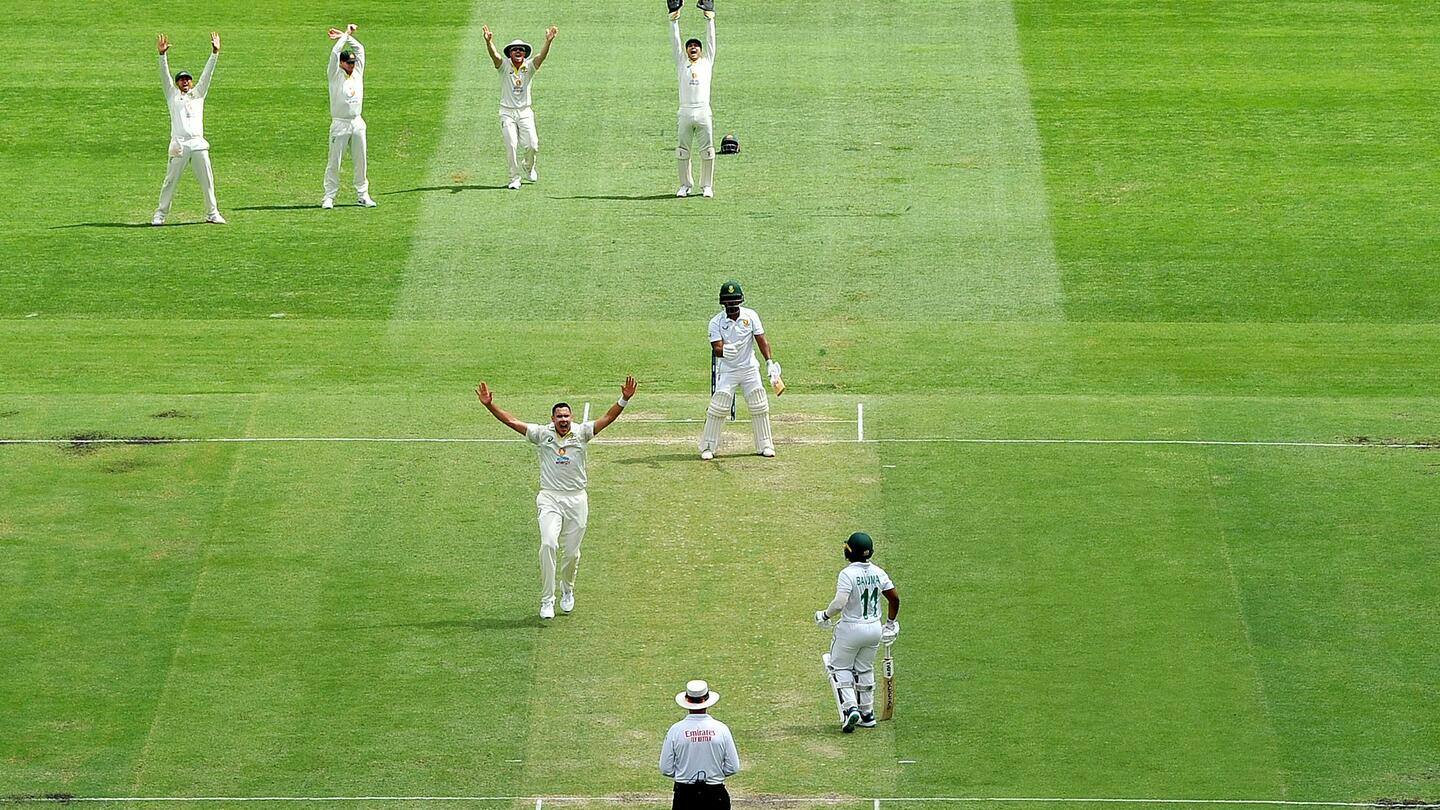AUS vs SA: Gabba pitch rated 'below average' by ICC
What's the story
The International Cricket Council (ICC), on Tuesday, rated the Gabba pitch used for the first Test between Australia and South Africa as "below average".
The hosts defeated South Africa within two days in the series opener in Brisbane.
As many as 34 wickets fell on the green top used in the Brisbane Test.
The pitch even drew criticism from South African skipper Dean Elgar.
Context
Why does this story matter?
Emirates ICC Elite Panel of Match Referees member, Richie Richardson, in his report, termed the Gabba wicket "below average".
Fast bowlers dominated the proceedings throughout the four innings.
South Africa were bowled out for 152 and 99 in the two innings, respectively.
Even Australia, who had to chase a paltry 34, lost four wickets in the chase.
Statement
A look at the official statement
"Overall, the Gabba pitch for this Test match was too much in favor of the bowlers. There was extra bounce and occasional excessive seam movement. The odd delivery also kept low on the second day," read a statement by Richardson.
"I found the pitch to be below average as per the ICC guidelines since it was not an even contest between bat and ball."
Repercussions
What are the repercussions?
The Gabba, Australia's iconic venue, has received one demerit point under the ICC Pitch and Outfield monitoring process due to the "below average" tag.
According to the rules, demerit points remain active for a rolling five-year period.
A venue can't host any international cricket for a year (12 months) if it accumulates five demerit points.
Match
AUS vs SA, The summary of 3rd Test
Australia defeated South Africa by six wickets in the opening Test at the Gabba, Brisbane.
Interestingly, the match ended on Day 2 itself, making it the second-shortest Test since World War II.
Australia claimed a 66-run lead before bowling out SA for just 99.
The hosts chased the 35-run target with ease.
Australia had bundled out SA on 152 after bowling first.
Duration
Second-shortest Test since World War II
The Brisbane Test is now the second-shortest since World War II. It recorded just 866 balls.
Last year's Day/Night Test between India and England (in Ahmedabad) remains the shortest in this duration. Only 842 balls were delivered in that Test.
According to ESPNcricinfo, the shortest-ever Test got over in 656 balls (Australia vs SA at the MCG, 1932).
SR
A jaw-dropping bowling strike rate
During the Brisbane Test, bowlers took a wicket every 25.5 balls.
According to ESPNcricinfo, this is the second-best bowling strike rate in a Test where bowlers took 30 or more wickets.
In 1888, the Lord's Test between England and Australia had a bowling strike rate of 20.8.
A total of where 38 wickets fell in mere 792 balls in that Test.
Criticism
Dean Elgar criticized the Gabba wicket
After the match concluded, South African skipper Dean Elgar slammed the Gabba pitch.
He clarified that the umpires "ignored" him when he questioned them about the implications of the pitch.
However, Elgar did not term the surface "unsafe".
"Only three batsmen applied themselves half-decently and scored runs. I don't think that was a very good Test wicket," he stated.
